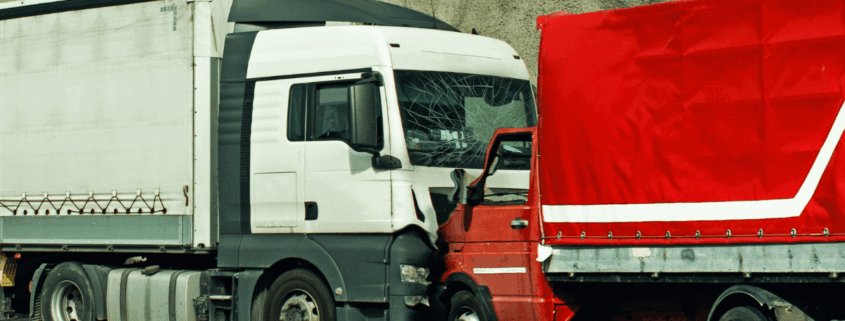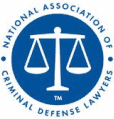Blind Spot Accidents Involving Large Trucks: Proving Driver Negligence in Kankakee County
Large commercial trucks are a constant presence on the roads of Kankakee County and throughout the Chicago metropolitan area. While essential for our economy, these massive vehicles present unique dangers to other drivers, particularly concerning their significant blind spots, often referred to as “no-zones.” An accident involving a passenger car and a semi-truck’s blind spot can be catastrophic, leading to severe injuries and complex legal questions about liability.
What Are Truck Driver Blind Spots or “No-Zones”?
The sheer size of a commercial truck creates large areas around the vehicle where the driver’s view is obstructed. These areas, known as blind spots or “no-zones,” are located in four key areas:
- Directly in Front of the Cab: The length and height of the truck’s hood can obscure smaller vehicles directly in front. This no-zone can extend up to 20 feet.
- Directly Behind the Trailer: A passenger car following too closely behind a truck may be completely invisible to the driver, who relies on side mirrors. This blind spot can stretch for approximately 30 feet.
- The Left Side of the Truck: A significant blind spot exists on the driver’s side, running alongside the cab and trailer. It is most prominent next to the cab and can prevent the driver from seeing a vehicle in the adjacent lane.
- The Right Side of the Truck: This is the largest and most dangerous blind spot. It can span multiple lanes and extend the entire length of the trailer. A truck driver making a right turn or changing lanes to the right may be completely unaware of a vehicle in this no-zone.
Because of these extensive blind spots, even the most conscientious truck driver can fail to see a nearby vehicle. However, professional truck drivers are trained to be aware of their no-zones and are required by law to take specific precautions to mitigate the risks.
Common Causes of Blind Spot Accidents in Kankakee County
Accidents involving a truck’s blind spots often occur when a truck driver attempts a maneuver without confirming the adjacent lane is clear. Several factors contribute to these devastating collisions on local roadways:
- Improper Lane Changes: The most frequent cause is a truck driver changing lanes on a busy thoroughfare like I-57 or Route 50 without seeing a passenger vehicle already occupying that space. The force of a semi-truck hitting a smaller car near the Bourbonnais Parkway exit can push it off the road, into other traffic, or cause it to spin out of control.
- Unsafe Turns: When making turns, especially right turns at intersections like Court Street and Schuyler Avenue in Kankakee, a truck’s trailer can swing wide and encroach on adjacent lanes. If a driver fails to account for a vehicle in their right-side blind spot while turning onto IL-17, they can easily cause a collision.
- Failure to Use Signals: A driver who does not signal their intent to change lanes on Route 45/52 deprives other motorists from Bradley or Manteno of the warning needed to avoid entering a blind spot at a critical moment.
- Inadequate Mirror Checks: Professional drivers are trained to check their mirrors frequently. A failure to properly scan all mirrors before and during a maneuver through a congested area like Kennedy Drive is a clear sign of negligence.
- Driver Fatigue: Drowsy driving impairs a driver’s reaction time and cognitive function. After long stretches on I-57, a fatigued driver is less likely to diligently monitor their surroundings and blind spots as they approach the Kankakee River bridge or other landmarks requiring full attention.
- Distracted Driving: Using a cell phone, adjusting the radio, or any activity that takes a driver’s attention off the road increases the risk of a blind spot-related accident, particularly in the heavy commercial traffic surrounding the Northfield Square Mall.
- Poorly Adjusted Mirrors: Federal regulations mandate that a truck’s mirrors must be in good working order and properly positioned to minimize blind spots. A failure to maintain or adjust mirrors before leaving a depot in a Kankakee industrial park can be a form of negligence.
What Types of Accidents Result from Truck Blind Spot Collisions?
The dynamics of a truck blind spot collision in Kankakee County can lead to several types of severe accidents, each with the potential for life-altering injuries.
- Sideswipe Accidents: This occurs when a truck changes lanes into a car, striking its side. The immense weight and force of the truck can crush the smaller vehicle or force it off the road.
- Underride Accidents: If a passenger vehicle is forced underneath the side or rear of a truck’s trailer, the consequences are often fatal. The top of the car can be sheared off, causing catastrophic injuries to its occupants.
- Rollover Accidents: The initial impact from a large truck can cause a smaller vehicle to lose control and roll over, leading to severe head, neck, and spinal cord injuries.
- Multi-Vehicle Pile-Ups: A blind spot collision can set off a chain reaction, causing other vehicles to collide as they try to avoid the initial crash.
The injuries resulting from these accidents are frequently severe and may include traumatic brain injuries, spinal cord damage, broken bones, internal organ damage, and disfigurement.
How Is Negligence Proven in a Kankakee County Blind Spot Accident Case?
To build a successful personal injury claim after a blind spot accident, your attorney must demonstrate that the truck driver was negligent. This involves proving four key elements:
- Duty of Care: The truck driver had a legal duty to operate their vehicle safely and adhere to all traffic laws and federal regulations to protect other motorists. This is generally straightforward in traffic accident cases.
- Breach of Duty: The driver failed to meet this duty of care. This could involve making an unsafe lane change, failing to check their mirrors, driving while distracted, or violating an FMCSA regulation.
- Causation: The driver’s breach of duty was the direct and proximate cause of the accident and your resulting injuries.
- Damages: You suffered actual harm, such as physical injuries, medical expenses, lost wages, and pain and suffering, as a result of the accident.
Establishing these elements requires a meticulous investigation and the collection of substantial evidence.
What Evidence is Important in a Kankakee County Truck Blind Spot Accident Claim?
Gathering the right evidence immediately following the accident is vital to building a strong case. An experienced truck accident attorney will work to preserve and analyze key pieces of information, including:
- Accident Scene Evidence: Photographs and videos of the final resting positions of the vehicles, tire marks on the pavement, debris fields, and any property damage can help accident reconstruction experts determine how the collision occurred.
- The Police Report: The responding officer’s report will contain initial observations about the accident, statements from parties and witnesses, and may include a preliminary determination of fault.
- Eyewitness Statements: Testimony from other drivers who saw the accident can provide an unbiased account of the truck driver’s actions leading up to the crash.
- Truck’s “Black Box” Data: Most modern commercial trucks are equipped with an Event Data Recorder (EDR), similar to an airplane’s black box. This device records critical data such as the truck’s speed, braking activity, and steering inputs in the moments before a collision. It is essential to act quickly to preserve this data before it is overwritten or destroyed.
- Driver’s Logs and Records: A driver’s hours-of-service logs can show if they were driving over the legal limit, which is strong evidence of fatigue. Other records, such as dispatch instructions, delivery schedules, and post-accident drug and alcohol tests, can also be revealing.
- Trucking Company Records: Evidence of the company’s hiring practices, driver training programs, and vehicle maintenance history can sometimes establish negligence on the part of the trucking company itself, not just the driver.
- Expert Testimony: Accident reconstruction specialists can use the physical evidence to create a scientific model of the crash, demonstrating how the driver’s failure to account for their blind spot led to the impact.
Who Can Be Held Liable for a Blind Spot Accident in Kankakee County?
While the truck driver’s negligence is often the primary focus, other parties may also bear legal responsibility for the accident.
- The Trucking Company: Under the legal doctrine of respondeat superior, employers are generally liable for the negligent acts of their employees committed within the scope of their employment. Additionally, a trucking company can be held directly liable for its own negligence, such as hiring an unqualified driver, failing to provide adequate training, or encouraging drivers to violate hours-of-service rules to meet deadlines.
- The Truck’s Owner: If the owner of the truck or trailer is a separate entity from the trucking company, they may be liable if they failed to properly maintain the vehicle.
- Cargo Loaders: In some instances, improperly loaded cargo can shift, affecting the truck’s stability and contributing to a driver losing control.
Identifying all potentially liable parties is a key step in ensuring that victims can recover the full compensation they are entitled to.
What Steps Should You Take After a Kankakee County Blind Spot Truck Accident?
The actions you take in the immediate aftermath of a truck accident are important for protecting both your health and your legal rights.
- Prioritize Safety and Seek Medical Attention: If you are able, move your vehicle to a safe location. Call 911 immediately to report the accident and request medical assistance. It is important to be evaluated by a medical professional, even if you do not feel seriously injured, as some serious conditions may not have immediate symptoms.
- Document the Scene: If you are physically able, take photos and videos of the accident scene from multiple angles. Capture images of the truck (including its license plate and any company logos), your vehicle, the positions of both vehicles, and any visible injuries.
- Obtain Information: Exchange contact and insurance information with the truck driver. Get the names and contact information of any witnesses.
- Do Not Admit Fault: Avoid making any statements to the truck driver, their employer, or insurance representatives that could be interpreted as an admission of fault. Stick to the facts of what happened.
- Contact an Experienced Truck Accident Attorney: The legal and regulatory complexities of truck accident cases require skilled legal representation. An attorney can immediately begin the investigation, issue a spoliation letter to preserve critical evidence like the truck’s black box data, and handle all communications with the trucking and insurance companies on your behalf.
What Compensation Is Available for Victims?
Victims of truck accidents in Kankakee County that are caused by driver negligence are entitled to seek compensation for their losses. These damages are intended to help make the victim whole again from a financial perspective and typically fall into three categories:
Economic Damages
These are the quantifiable financial losses you have suffered. They are often straightforward to calculate with documentation like bills and pay stubs. They include:
- Past and future medical expenses: This covers the costs of all medical care related to your injuries, from emergency room visits and hospital stays to surgeries, prescription medications, and long-term care.
- Lost wages and loss of future earning capacity: This compensates you for the income you have lost due to being unable to work, as well as any future income you will lose if your injuries prevent you from returning to your job or from earning what you could have before the accident.
- Property damage to your vehicle: The cost to repair or replace your vehicle and any other property damaged in the accident.
- Costs of rehabilitation and physical therapy: Expenses for physical therapy, occupational therapy, and other rehabilitation services needed for your recovery.
Non-Economic Damages
These damages compensate for the intangible, personal losses that result from the injury. They are more subjective and are meant to address the ways your life has been negatively impacted beyond your finances. They include:
- Pain and suffering: Compensation for the physical pain and emotional distress you have endured.
- Emotional distress and mental anguish: This covers the psychological toll of the accident, such as anxiety, depression, and PTSD.
- Disfigurement and scarring: If the accident resulted in permanent scarring or disfigurement, you may be compensated for the physical and emotional impact.
- Loss of enjoyment of life: This compensates for the inability to participate in hobbies and activities you once enjoyed due to your injuries.
- Loss of consortium (for the victim’s spouse): This compensates a spouse for the loss of companionship, affection, and other benefits of the marital relationship.
Punitive Damages
In some cases, victims may also be awarded punitive damages. Unlike economic and non-economic damages, which are meant to compensate the victim, punitive damages are intended to punish the at-fault party for particularly reckless or malicious behavior and to deter others from similar conduct. Punitive damages are not common and are only awarded when the defendant’s actions go beyond simple negligence, such as in cases involving:
- Driving under the influence: If the truck driver was intoxicated, it could be a basis for punitive damages.
- Flagrant safety violations by a trucking company: This could include a company knowingly forcing drivers to violate hours-of-service regulations, falsifying maintenance records, or otherwise demonstrating a willful disregard for safety.
To be awarded punitive damages in Illinois, you must present “clear and convincing evidence” that the defendant’s actions showed an evil motive or a reckless indifference to the rights and safety of others.
Important Legal Deadlines
In Illinois, there is a strict deadline for filing a truck accident lawsuit, known as the statute of limitations. For most personal injury claims, this deadline is two years from the date of the accident. If a wrongful death claim is being filed, the two-year deadline begins on the date of the victim’s death. Missing this deadline will almost certainly result in the court dismissing your case, regardless of its merits. It is crucial to consult with an attorney as soon as possible to ensure all deadlines are met.
Contact a Kankakee County Truck Accident Attorney Today
The moments following a collision with a large truck are frightening and disorienting. When that accident is the result of a driver’s failure to account for their blind spots, victims have the right to hold the responsible parties accountable.
At Fotopoulos Law Office, we are committed to providing dedicated and knowledgeable legal representation to victims of truck accidents in Kankakee County and the greater Chicago area. We have the resources to conduct a thorough investigation, engage top experts, and build a compelling case on your behalf. We will handle the legal burdens so you can focus on your recovery.
If you or a loved one has been injured in a blind spot accident, contact our office today at 708-942-8400 for a free consultation to discuss your case and learn how we can help you pursue the justice and compensation you deserve.










Leave a Reply
Want to join the discussion?Feel free to contribute!